- ارسال 24 ساعته در تهران
- ارسال به شهرستان در 2 تا 4 روز کاری
- بسته بندی ایمن
- گارانتی بازگشت کالا
- پشتبیانی 7 روز و 24 ساعته
کتاب Suomen Mestari 1 (فنلاندی)
توضیح کوتاه در رابطه با محتوای کتاب:
اطلاعات کتاب:
| نویسنده |
Sonja Gehring – Sanni Heinzmann |
|---|---|
| ناشر |
Finn Lectura |
| شابک |
978-9517925433 |
| نوع جلد |
شومیز |
| تعداد صفحات |
256 |
| نوع چاپ |
چاپ رنگی ,چاپ سیاه و سفید |
180,000 تومان – 250,000 تومانمحدوده قیمت: 180,000 تومان تا 250,000 تومان
فرق چاپ دیجیتال با افست چیست؟
چاپ دیجیتال بیشتر برای تیراژ پایین و چاپ سریع بهکار میرود. در این روش، فایل مستقیماً از کامپیوتر روی دستگاه چاپ منتقل میشود و برای چاپ چند جلد کتاب یا نمونه اولیه بسیار مناسب است.
اما چاپ افست برای تیراژ بالا استفاده میشود و کیفیت رنگ و جزئیات در آن بسیار بالاتر است. در چاپ افست ابتدا زینک تهیه میشود و سپس طرح روی کاغذ منتقل میگردد. این روش برای چاپهای حرفهای و اقتصادی در تعداد زیاد کاربرد دارد.
تفاوت قطع وزیری و رحلی در کتاب چیست؟
قطع وزیری یکی از رایجترین اندازههای کتاب است و ابعادی حدود ۲۴ در ۱۷ سانتیمتر دارد. این نوع قطع برای کتابهای درسی، دانشگاهی و آموزشی بسیار پرکاربرد است.
اما قطع رحلی بزرگتر بوده و معمولاً اندازه آن ۲۹ در ۲۱ سانتیمتر یا حتی بیشتر است. این قطع برای کتابهای تصویری، زبان، فرهنگ لغت و کتابهای آموزشی با جزئیات زیاد استفاده میشود تا خوانایی و فضای صفحه بیشتر باشد.
تفاوت جلد سخت و جلد نرم چیست؟
کتاب با جلد سخت (Hardcover) دارای رویهای محکم از جنس مقوای ضخیم یا گالینگور است که با روکش سلفون یا پارچه پوشانده میشود. این نوع جلد دوام بسیار بالایی دارد و برای کتابهای نفیس، مرجع یا هدیهای انتخاب میشود.
در مقابل، جلد نرم (Paperback) از مقوای نازکتر ساخته شده و سبکتر و اقتصادیتر است. بیشتر کتابهای آموزشی و رمانها با جلد نرم چاپ میشوند.
تفاوت کاغذ تحریر، بالک و گلاسه چیست؟
کاغذ تحریر (Wood-free Paper)
کاغذ تحریر متداولترین نوع در چاپ کتاب است. رنگی سفید و سطحی مات دارد که باعث میشود چشم هنگام مطالعه خسته نشود.
این نوع کاغذ برای کتابهای درسی، دانشگاهی، آموزشی و رمانها بسیار مناسب است.
ویژگیها:
- رنگ سفید و طبیعی
- ضخامت و استحکام مناسب
- جذب خوب جوهر چاپ
- مناسب برای نوشتن و یادداشتبرداری
کاغذ بالک (Book Paper / Bulky Paper)
کاغذ بالک کمی ضخیمتر و سبکتر از کاغذ تحریر است و معمولاً رنگ آن کرم یا نخودی است.
در نتیجه هنگام مطالعه، نور کمتری منعکس میشود و چشم کمتر خسته میشود. به همین دلیل در کتابهای حجیم مثل رمانهای طولانی یا منابع آموزشی پرصفحه، بسیار محبوب است.
ویژگیها:
- رنگ گرم (کرم یا نخودی)
- سبکتر از تحریر
- حس طبیعیتر هنگام ورق زدن
- مناسب برای مطالعه طولانیمدت
کاغذ تحریر (Wood-free Paper)
کاغذ گلاسه سطحی براق و صاف دارد که رنگها را بسیار زنده و درخشان نمایش میدهد.
این نوع کاغذ بیشتر برای کتابهای تصویری، کاتالوگها، مجلات رنگی و کتابهای آموزشی تصویردار استفاده میشود.
ویژگیها:
- سطح براق و صاف
- نمایش شفاف رنگها
- وزن نسبتاً بالا
- مناسب برای چاپ تصاویر باکیفیت
- ارسال 24 ساعته در تهران
- ارسال به شهرستان در 2 تا 4 روز کاری
- بسته بندی ایمن
- گارانتی بازگشت کالا
- پشتبیانی 7 روز و 24 ساعته
کتاب Suomen Mestari 1
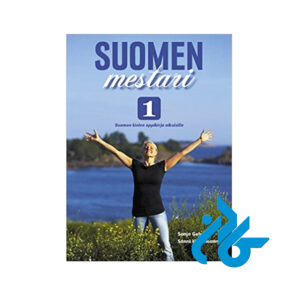

پیرامون زبان فنلاندی
زبانِ فَنلاندی (به فنلاندی: suomen kieli، تلفظ: سوئُمی) زبانی است که ۹۲ درصد فنلاندیها و اقلیتهای فنلاندی در بیرون از فنلاند بدان سخن میگویند. همچنین این زبان زبان رسمی فنلاند و زبان رسمی اقلیتهای زبانی فنلاندی در سوئد و نروژ میباشد.کتاب Suomen Mestari 1 فنلاندی از خانواده زبانهای فینواوگری و از دید گونهشناسی میان زبانهای صرفی و زبانهای پیوندی جای میگیرد. در این زبان نامواژگان، صفتها، ضمیرها، کارواژگان و شمارگان وابسته به نقششان در جمله صرف شده و تغییر میپذیرند. فهرست ۱ تاریخچه ۲ دستهبندی ۳ پراکندگی جغرافیایی ۴ وامگیری ۵ واژههای نو ۶ الفبای فنلاندی ۷ نمونهای از زبان فنلاندی ۸ منابع ۹ پانویس تاریخچه چنین پنداشته میشود که زبانهای بالتیک-فینی از دل زبان نیافینی- که آن هم از زبانهای سامیک در ۱۵۰۰ تا ۱۰۰۰ (پیش از میلاد) جداشدهبود-بیرون آمدهباشد. پنداشته میشود که زبان نیافینی سه گویش داشتهاست:شمالی، جنوبی و خاوری. زبانهای بالتیک-فینی در سده ۱ (میلادی) جداشدند ولی به اثرگذاری بر هم دنباله دادند. از اینرو گویشهای فنلاندی خاوری از دید پیدایشی نیافینی خاوری با بسیاری از ویژگیهای خاوریاست و گویشهای فنلاندی جنوب غربی اثرهایی یکدست از استونیایی داراست.کتاب Suomen Mestari 1 شیوه نوشتاری فنلاندی نخستین بار به دست میکائل آگریکولا اسقف فنلاندی در سده ۱۶ آفریده شد. وی پایه نویسه خود را بر سوئدی، آلمانی و لاتین گذارد. درآینده بسیاری دیگر نیز در نویسه فنلاندی بازنگری نمودند. در سده شانزدهم ادب فنلاندی به کوشش کسانی چون پاوالی یوستن، اریک سورولاینن و یاکو فینو و آگریکولا به کامیابیهایی دستیافت. در سده ۱۷ در فنلاند کتابهایی به زبانهای فنلاندی، نروژی، سوئدی، دانمارکی، استونیایی و آلمانی چاپشد. با اینهمه در این زبان هنوز کتابهای ارزشمند به لاتین نوشته میشد و زبانهای فنلاندی و سوئدی کمارج دانسته میشدند.کتاب Suomen Mestari 1 زبان فنلاندی دارای بزرگترین دسته از همخوانهای سایشی بوده که امروز بسیاری از آنها را از دست دادهاست. برای نمونه آوای /ɣ/(غ) از میان رفته و برای نمونه واژه parghutin به paruttiin دگرش یافتهاست. دستهبندی فنلاندی هموند گروه زبانهای بالتیک-فینی و از خانواده زبانهای اورالیست. از دیگر زبانهای این خانواده میتوان از استونیایی و مجاری نامبرد. فنلاندی زبانی ترکیبی و از گونه زبانهای پیوندیست. اندکی آمیزش زبانی در میان فنلاندیزبانان دیده میشود. در این زبان صرف و دگرشها در نامواژهها و کارواژهها وابسته به نقششان در جمله است.کتاب Suomen Mestari 1 فنلاندی زبانی است از خانواده زبانهای فینواوگری. برخی از نشانههای این وابستگی از این دستند: ریختشناسی؛ دربرگیرنده: قالب پسوندها مانند حالت مضافٌالیهی ملکی -(t)a / -(t)ä (<فینواوگری *-ta), نشانههای جمع -t و -i- پسوندهای مضافٌالیه مانند اولشخص مفرد -ni (<فینواوگری *-mi), پسوندهای اشتقاقی گوناگون بهرهبری از واژگانی با آوایی یکسان با دیگر زبانهای فینواوگری ویژگیهایی که سبب جدایش فنلاندی از زبانهای هند و اروپایی میشود از این دستند: نبودن جنس در دستور زبان فنلاندی؛ برای نمونه ضمیر hän هم برای مذکر و هم برای مونث معنای او را میدهد(مانند انگلیسی از she , he بهره نمیبرد.)کتاب Suomen Mestari 1 واژههای دراز به دلیل ساختار زبانی قالبهای دستوری بسیار برتری پسنهادهها به حرف اضافه، هر دوی اینها به دلیل گستردگی وندهای پیوندی کمکاربردند. بیبهرگی از فعل داشتن، به جای آن یک ساختمان مکانی بهرهبرداری میشود. درباره جایگاه و خاستگاه زبان فینواوگری نگرههای گوناگونی هست. برپایه نگرههای تازه از جدایش میان زبان فنلاندی و مجاری ۶۰۰۰ سال میگذرد. برخی پژوهشها میرساند که نیاکان فنلاندیها ۳هزار سال پیش در فنلاند کنونی جاگیر شدهاند. زبان فنلاندی وامواژگان بسیاری از زبان سوئدی و دیگر زبانهای ژرمنی ستاندهاست.کتاب Suomen Mestari 1کتاب Suomen Mestari 1
The Finnish language is for beginner learners designed to study in Finland and abroad alike. The text of the book is made up of oral and written communication situations, so you will become familiar with spoken and written Finnish.
The text progresses to level A2 through the Common European Framework of Reference for .Languages (CEFR). English is used throughout the book in job descriptions, grammar tips and informationکتاب Suomen Mestari 1.
Suomen Mestari 1 also includes a list and section of English grammar. (English) Sun English Finnish for Beginners is a basic Finnish textbook for young people and adults studying in Finland and abroad as a group and independently.
The starting point of the book is everyday communication situations, so they become familiar with both speech and writing methods. All tasks, language structures and information about Finnish culture are explained in English.
At the end of the book there is a glossary and an English grammar section. There is a CD on the back cover that contains the songs and listens to the book. Separate words are also printed in .Finnish-Englishکتاب Suomen Mestari 1.
About English
Finnish (Finnish: suomen kieli, pronunciation: Swedish) is a language spoken by 92% of Finns and minorities outside Finland. It is also the official language of Finland and the official language of the Finnish-speaking minorities in Sweden and Norway.
Finnish belongs to the family of Finno-Ugric languages and is typologically between morphological and related languages. In this language, vocabularies, adjectives, .pronouns, adverbs and numbers depend on their role in the sentence and are changedکتاب Suomen Mestari 1.
Contents 1 History 2 categories 3 Geographical dispersion 4 borrowing 5 new words 6 Finnish alphabet 7 examples from the Finnish language 8 sources 9 Footnotes History The Baltic-Finnish languages are thought to have originated from the Niafini language, which was separated from the Semitic languages between 1500 and 1000 BC. The Niafini language is thought to have had three dialects: northern,
southern, and eastern. The Baltic-Finnish languages separated in the 1st century AD but continued to influence each other. Oriental Finnish
dialects are therefore genetically Eastern with many Eastern features, and southwestern Finnish dialects have .uniform effects from Estonianکتاب Suomen Mestari 1.
The Finnish writing style was first created by the Finnish bishop Michael Agricola in the 16th century. He based his characters on Swedish, German and Latin. Many others later revised the Finnish script.
In the sixteenth century, Finnish literature flourished through the efforts of Pavali Eusten, Eric Soroulinen, and Yako Fino and Agricola. In the 17th century, books were published in Finland in Finnish,
Norwegian, Swedish, Danish, Estonian and German. Nevertheless, valuable books were written in Latin in this language, and Finnish and Swedish were considered rare languages.
The Finnish language
has the largest category of abrasion consonants, many of which are lost today. For example, the sound / ɣ / (غ) has disappeared and for .example, the word parghutin has been changed to paruttiinکتاب Suomen Mestari 1.
Grouping Finnish is a member of the Baltic-Finnish language group and belongs to the Uralic language family. Other languages of this family include Estonian and Hungarian.
Finnish is a hybrid language of a variety of languages. There is little linguistic mixing among Finnish speakers. In this language, the conjugations and changes in the words and phrases depend on their role in the sentence.
Finnish is a language of the Finno-Ugric language family. Some of the signs of this dependence are as follows:
Morphology; Includes: Format extensions such as the plural form of property – (t) a / – (t) ä (<finavagri * -ta), Plural symbols -t and -i- Adjective suffixes such as the first person singular -ni (<finite * * -mi), Various derivative extensions Utilizing words with the same sound as other Finno-Ugric languages Features that distinguish Finnish from Indo-European languages include:
.No gender in Finnish grammar; For example, the pronoun hän means both masculine and feminine (it does not use she, he like English). Long words because of the linguistic structure Many grammatical formats .کتاب Suomen Mestari 1The superiority of suffixes over prepositions, both of which were underused due to the wide range of hyperlinks. Deprivation of the verb has a spatial structure used instead. There are various views on the status and origin of the Finno-Ugric language. According to new ideas, 6,000 years have passed since the separation between Finnish and Hungarian.
Some research suggests that the ancestors of the Finns settled in present-day Finland 3,000 years ago. Finnish and many other Swedish and German languages are .borrowedکتاب Suomen Mestari 1.
| نویسنده |
Sonja Gehring – Sanni Heinzmann |
|---|---|
| ناشر |
Finn Lectura |
| شابک |
978-9517925433 |
| نوع جلد |
شومیز |
| تعداد صفحات |
256 |
| نوع چاپ |
چاپ رنگی ,چاپ سیاه و سفید |

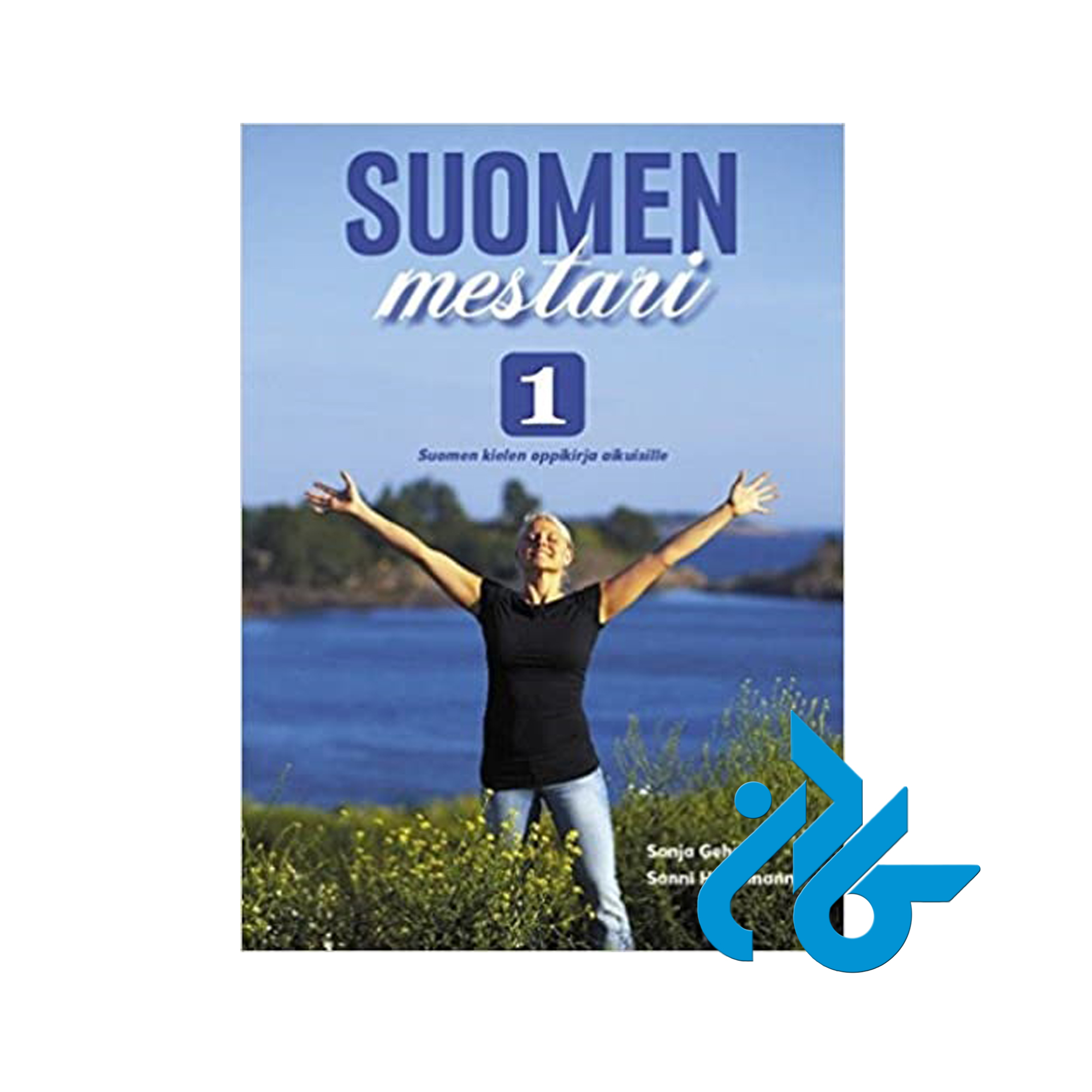
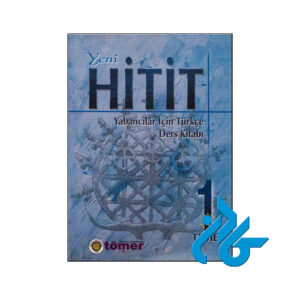
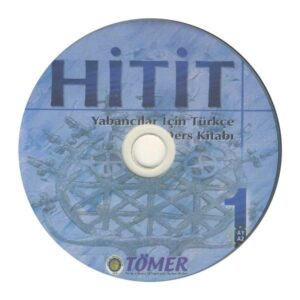




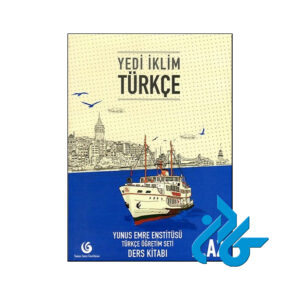
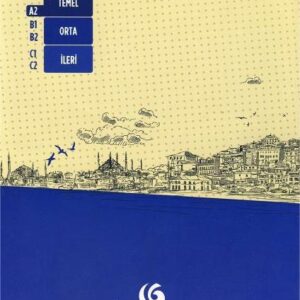
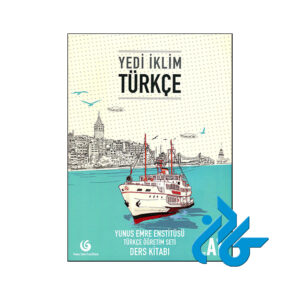
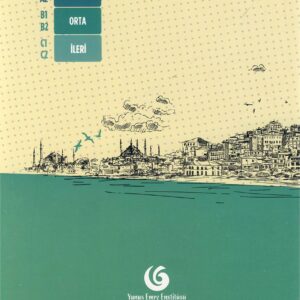
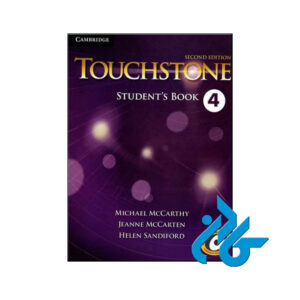
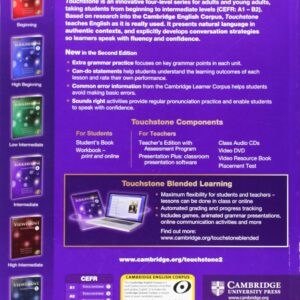

نقد و بررسیها
پاککردن فیلترهاهنوز بررسیای ثبت نشده است.